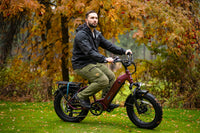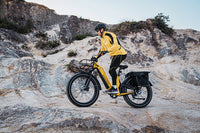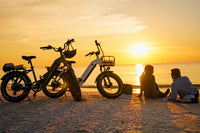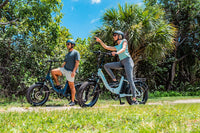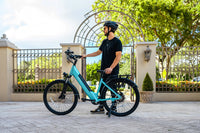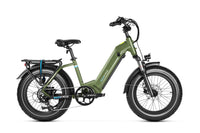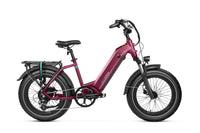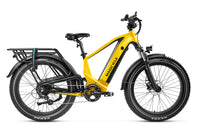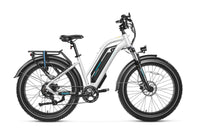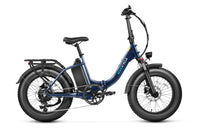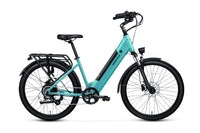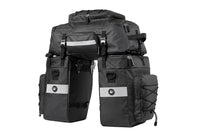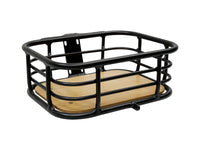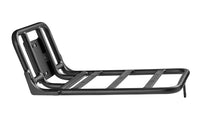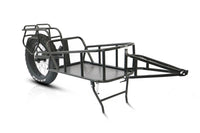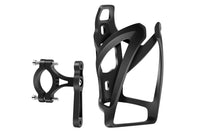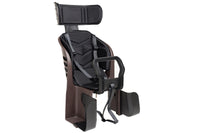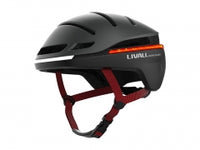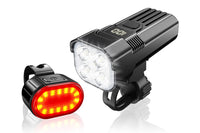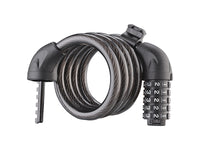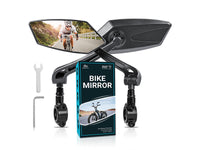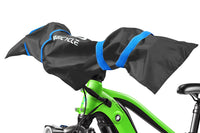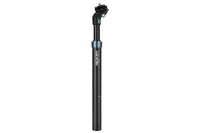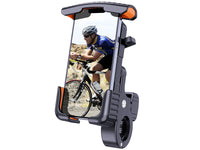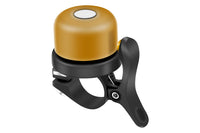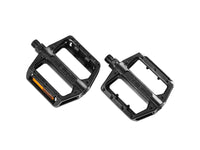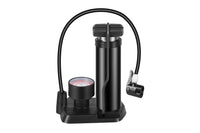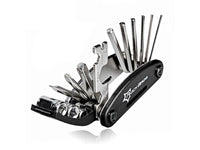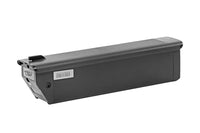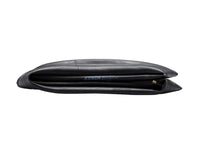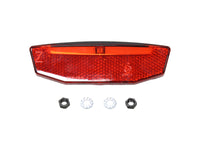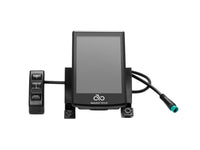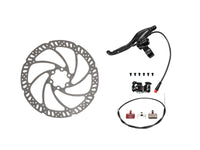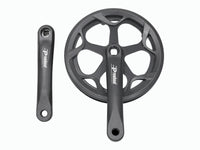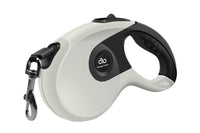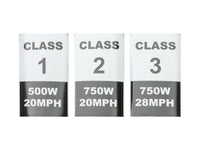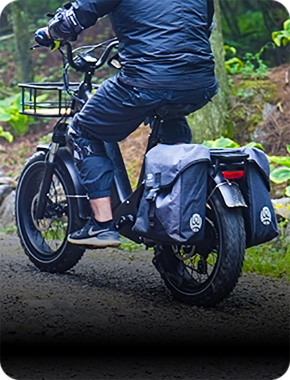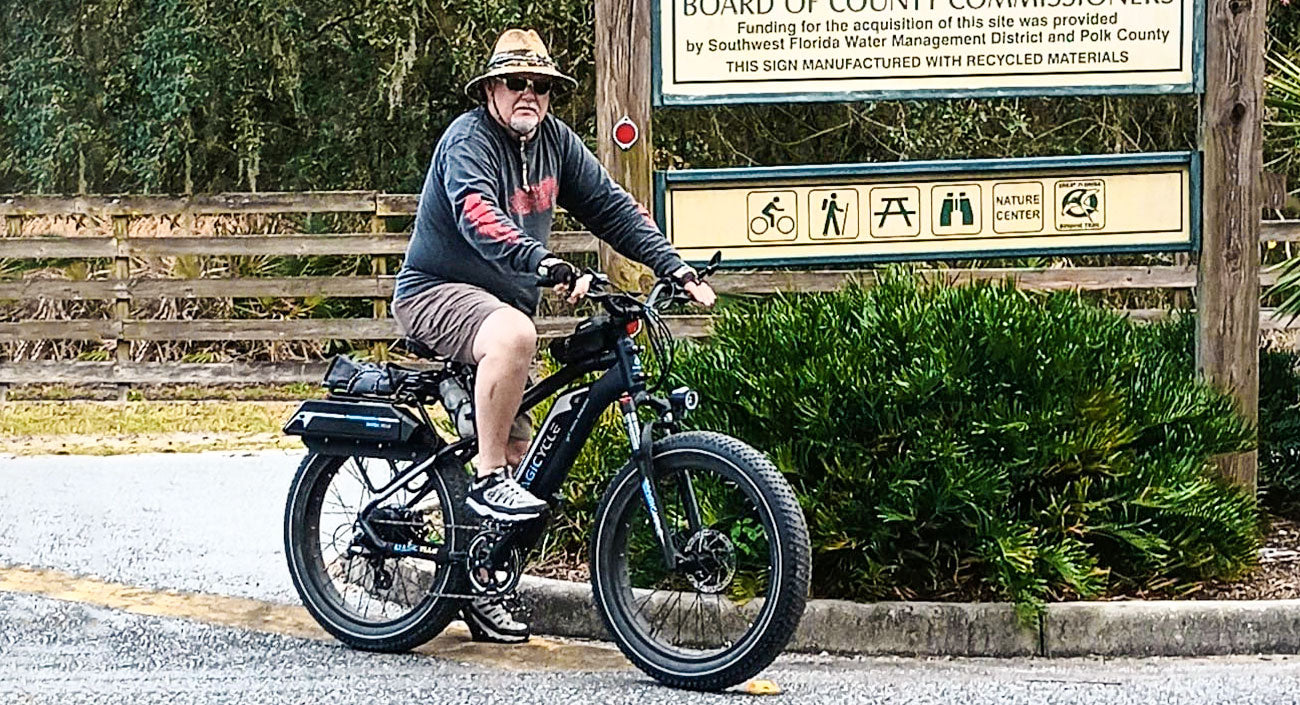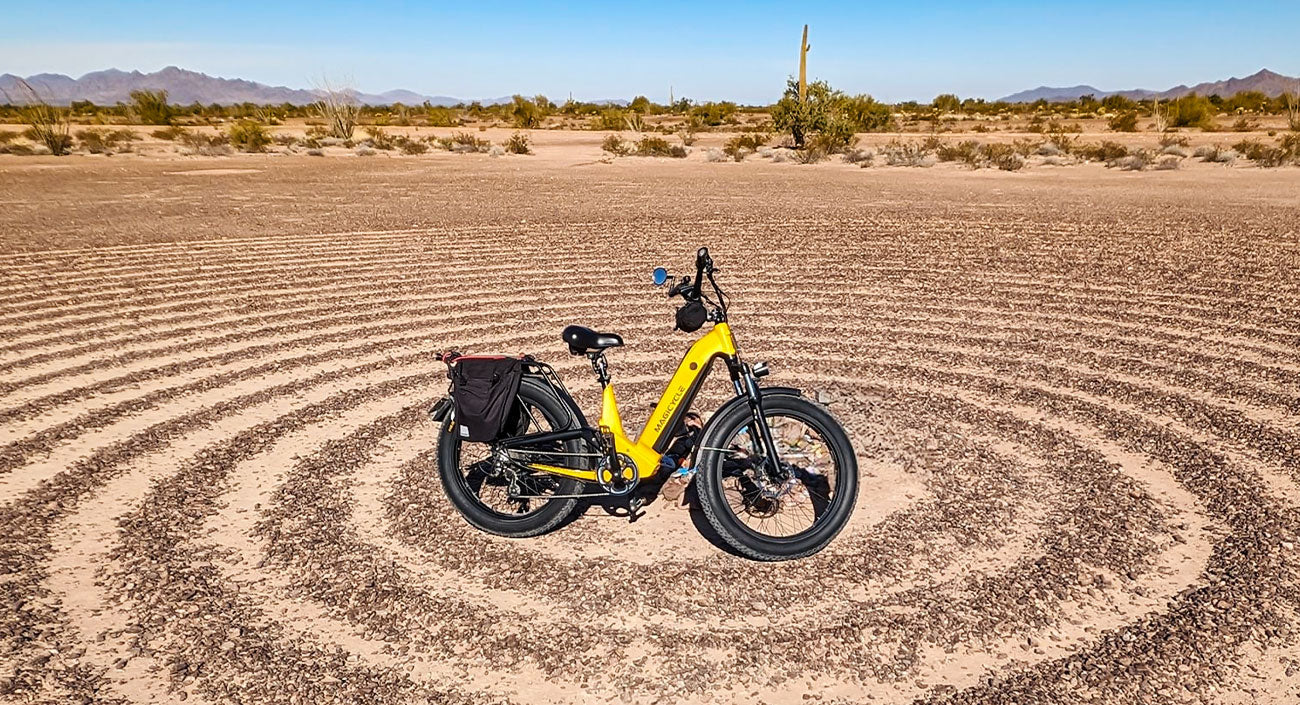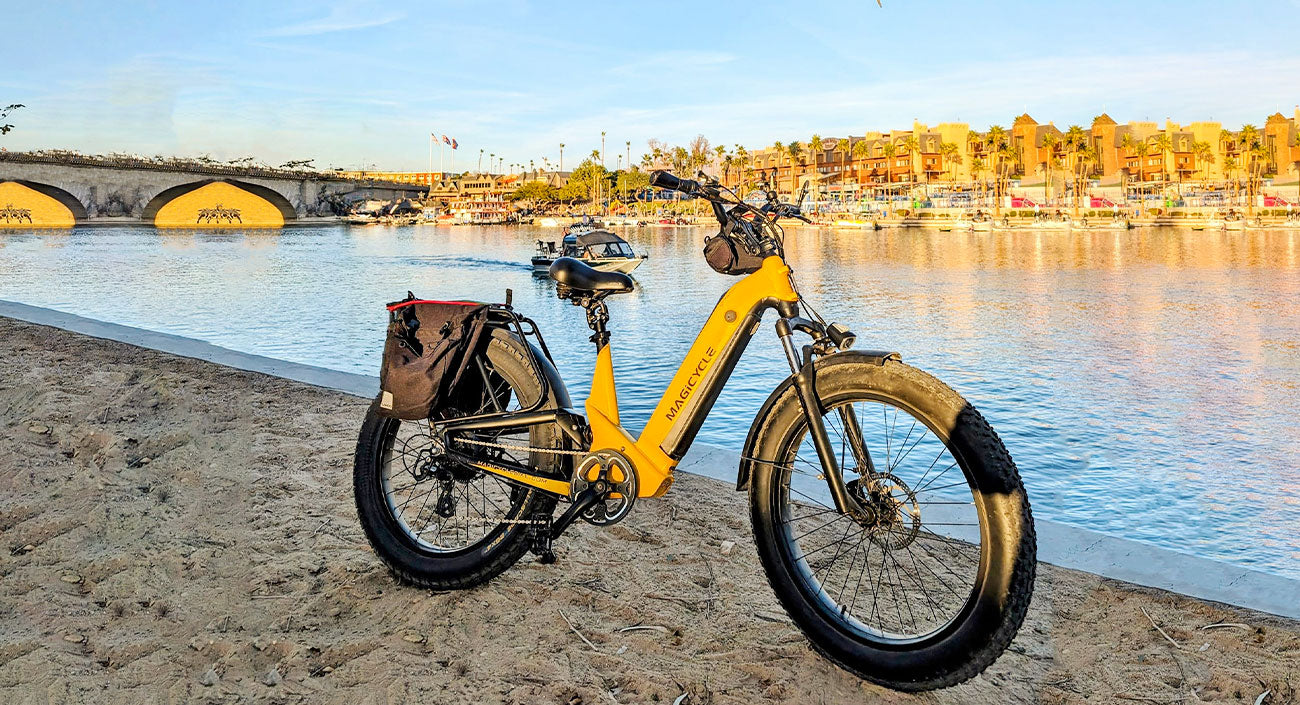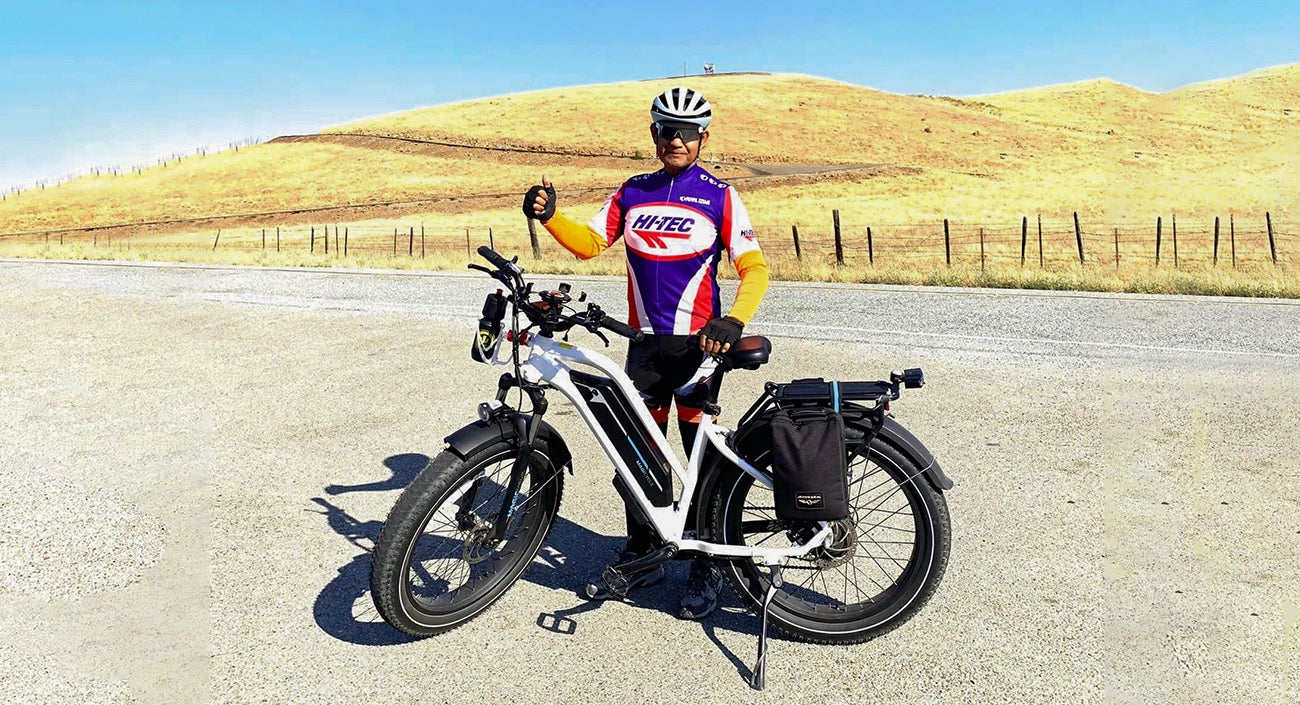 September 02,2024
September 02,2024
 September 02,2024
September 02,2024
E-bikes are quickly becoming a favorite way to get around, and it's easy to see why – they're fast, fun, and eco-friendly. But just like with any bike, riding safely means knowing how to communicate with other people on the road. That's where signals work. In this article, we'll talk about all the hand signals you'll need to know so that whether you're turning, stopping, or just letting others know what you're doing, you'll stay safe and keep others safe, too.
Key Hand Signals for E-Bike Riders
Riding an E-Bike comes with a set of responsibilities, one of which is signaling your intentions to others sharing the road. Here's a breakdown of the essential hand signals you should master for turning and stopping.
Turning Signals
- Left Turn: Extend your left arm straight out to the side. This clearly indicates to those behind you that you intend to move left.
- Right Turn (Option 1): Extend your right arm straight out to the side, mirroring the left turn signal but in the opposite direction.
- Right Turn (Option 2): Alternatively, you can signal a right turn by extending your left arm out with your elbow bent upwards at a 90-degree angle. This is a widely recognized cycling signal that drivers are accustomed to looking for.
Stopping Signal
- Braking: Raise your left arm and bend it downwards at the elbow, forming an upside-down "L" shape with your forearm pointing towards the ground and palm facing behind you. This gesture alerts those behind you that you're slowing down or coming to a stop.
Due to the higher speeds that E-Bikes can reach, it's crucial to signal earlier than you might on a regular bike. This gives other road users more time to react to your intended maneuvers.
E-Bike Accessories for Signaling
Modern E-Bikes are often equipped with features that enhance your ability to signal your intentions on the road.
Built-in Electronic Signalers
Many E-Bikes are equipped with built-in electronic signalers, akin to the turn signals found on cars or motorcycles. To get acquainted with the signal controls, which are generally positioned within easy reach on the handlebars. Spend some time getting comfortable with switching them on and off, and ensure that they're functioning properly. Additionally, regular checks should be performed to make sure that the lights are not only clean but also free from any obstructions that could impede their visibility. This is particularly important when riding at night or during inclement weather conditions, where visibility is paramount for safety.
Lights and Reflectors
- The lights and reflectors on your E-Bike play a crucial role in ensuring your visibility, especially during times of low light. Make regular use of the front white light and rear red light during dawn, dusk, or nighttime rides, ensuring they're bright enough to be seen by others from a distance. To further enhance your visibility, consider adding reflective tape to your helmet, clothing, or backpack. Additionally, some E-Bikes come with tires that feature reflective sidewalls, providing extra visibility from the sides as you travel.

Signal Timing and Visibility on E-Bikes
Getting the timing right with your signals is especially important when you're on an E-Bike. You should give others enough time to react to your signals. Here's what you need to keep in mind:
The Early Signal
- Anticipate Your Moves: Plan your turns and stops well in advance, signaling earlier than you might on a regular bike. This advanced warning is crucial for drivers and other cyclists to adapt to your actions.
- Maintain the Signal: Hold your signal for at least three seconds before you make your turn or begin braking. This duration ensures that those around you have had a moment to register your intention.
Ensure Your Signals Are Seen
To make sure your signals are noticed while riding your E-Bike, always seek to establish eye contact with other road users. This non-verbal communication ensures that drivers, cyclists, and pedestrians have seen your intentions. Positioning is also key; signal from a place where you can be clearly seen, avoid other vehicles' blind spots. If there's any doubt whether your initial signal was noticed, don't hesitate to repeat it. It's far better to over-signal than risk being unseen.
Advanced E-Bike Signaling Techniques
Beyond the basics, there are advanced signaling techniques that can help you solve complex riding situations with greater ease.
In Heavy Traffic
Remain acutely aware of your surroundings so you can signal promptly for sudden changes, such as swerving to avoid obstacles or adjusting your path around parked cars. It's also effective to mimic the signals of the cars in front of you; if a car signals for a right turn, do the same to keep those behind you informed. When it comes to positioning, make sure you're visible, especially in slow-moving traffic-taking a spot in the center of the lane can help ensure you're seen by drivers in larger vehicles.
Group Riding Dynamics
When riding as a group on E-Bikes, start with a pre-ride briefing to agree on hand signals and verbal commands, ensuring clear communication among all riders. The leader should initiate signals for turns and stops, with subsequent riders echoing these gestures to maintain visibility and coherence throughout the group. For lane changes or turns, adopt sequential signaling where each rider signals in turn, rather like a domino effect, enhancing the group's visibility to other road users.
The Ethics of E-Bike Signaling: Sharing Multi-Use Paths
Sharing the trail with pedestrians, joggers, and traditional cyclists means adapting your E-Bike signaling to a more nuanced environment.
Responsible Riding Practices
- Speed Management: Adjust your speed to match the flow of the path. Even if you have the capability to go faster, it's important to ride at a pace that is safe for everyone.
- Clear Signals: Use hand signals well in advance of turns or stops. Be mindful that not all path users will be familiar with cycling signals, so use your voice when necessary.
- Bell Use: A bell is a friendly way to alert others of your approach. Give a couple of short rings well before overtaking.
Proper Passing Protocols
- Announcing Overtaking: When passing, clearly announce your intention by saying, "On your left," ensuring that those ahead are aware of where you will pass.
- Passing Space: Give other path users plenty of space-do not pass too closely. This is not only courteous but also reduces the likelihood of causing an alarm or an accident.
Minimizing Conflicts
- Pedestrian Priority: Always yield to pedestrians. They have the right of way on multi-use paths.
- Stay Alert: Keep an eye out for children and pets, who can be unpredictable. Be ready to stop or slow down quickly.
- Acknowledgment: A nod, wave, or thank you after passing builds goodwill and fosters a positive atmosphere among path users.
Ride Smart, Signal Smarter
Mastering the art of signaling on your E-Bike is more than just a safety measure-it's a cornerstone of responsible riding. By adopting clear hand signals, utilizing the advanced features of your bike, and respecting the shared dynamics of multi-use paths, you become an ambassador of mindful mobility. The road is a community space, and when we communicate effectively, we ensure not only our own safety but also enhance the harmony and well-being of all who travel alongside us. So, as you embrace the swift, exhilarating world of E-Bike travel, the power of good signaling is quite literally in your hands-use it wisely, ride with consideration, and enjoy every journey to its fullest.


















































